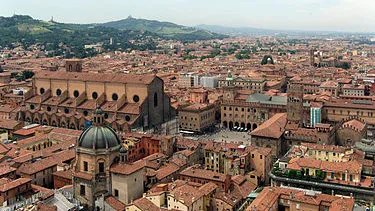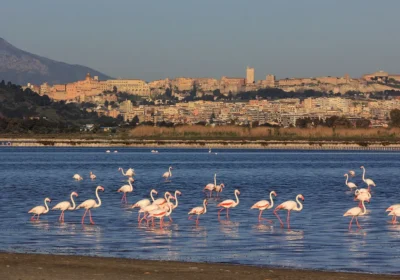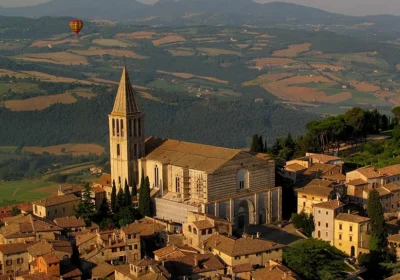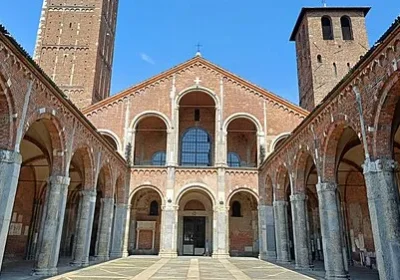The settlement was supposedly founded in the sixth century BC by the Etruscan king Fero, who named the town after his daughter, Felsina. Thanks to its favourable location, fertile land and trade, the settlement grew rapidly. After a while it was conquered by the Boii (a Celtic tribe) and since then the city has been called Bonnonia. The city survived the collapse of the Roman Empire, the fragmentation and formation of a new state, persecution of Christianity.
The tour begins in Piazza Maggiore, the centre of political and economic life in Bologna. The square is decorated with the Neptune fountain by the 16th century sculptor Giambologna;
The Palazzo Comuna or Palazzo Accursio is named after one of its former owners, the famous lawyer D’Accursio. It was also the site of the apartments of the Papal Legate. It is now the building of the Municipality.
Go up the famous Bramante Staircase to see the Farnese Chapel and the Farnese Hall, as well as the State Collection of Paintings.
The Exchange Hall – closed on Sundays and Monday mornings, which now houses the city’s new multimedia library, under whose glass floor the archaeological excavations of the Roman Forum are clearly visible.
King Endzo’s Palace – named after King Endzo (son of Emperor Frederick II), who was captured by the Bolognese in 1249 at the Battle of Fossalt. This palace served as his “golden cage”.
The Podesta Palace is a 13th-century administrative building, rebuilt in the 15th century by the architect Aristotle Fioravanti (in Moscow, he built the Assumption Cathedral of the Moscow Kremlin). It is a work of engineering art, where the Tower rests not on the ground but on the pilasters of the vault.
The Basilica of St Petronius – dedicated to the patron saint of the city and is a symbol of Bologna’s independence – The church was founded in 1390 in honour of Bologna’s victory over the Pope. It was built according to the design of the architect Antonio di Vincenzo. Inside the Basilica there are 22 chapels with frescoes and various works of art, as well as the world’s longest meridian.
Palace of Notaries – built in 1388 by architect Antonio di Vincenzo, the building belonged to the Guild of Notaries.
Palace of Banks – where bank offices were located and currency was exchanged during the Middle Ages. It was built to a bold design by Jacopo Barozzi, nicknamed Vignola, in the second half of the 16th century. The façade is supported by 15 arches that overlook the Medieval Market near the square.
The Avaglione Portico is one of the many porticos in Bologna, which stretch for 38 kilometres across the city.
The Archigymnasium Palace is the building of the first university in Bologna, with a unique anatomical theatre; it is also home to the city library.
The two towers, the Azinelli and the Garisenda, are the symbol of the city. Medieval Bologna had about a hundred towers and tower houses, which belonged to the main families of the city. The height of a tower indicated the power of its owners.

















